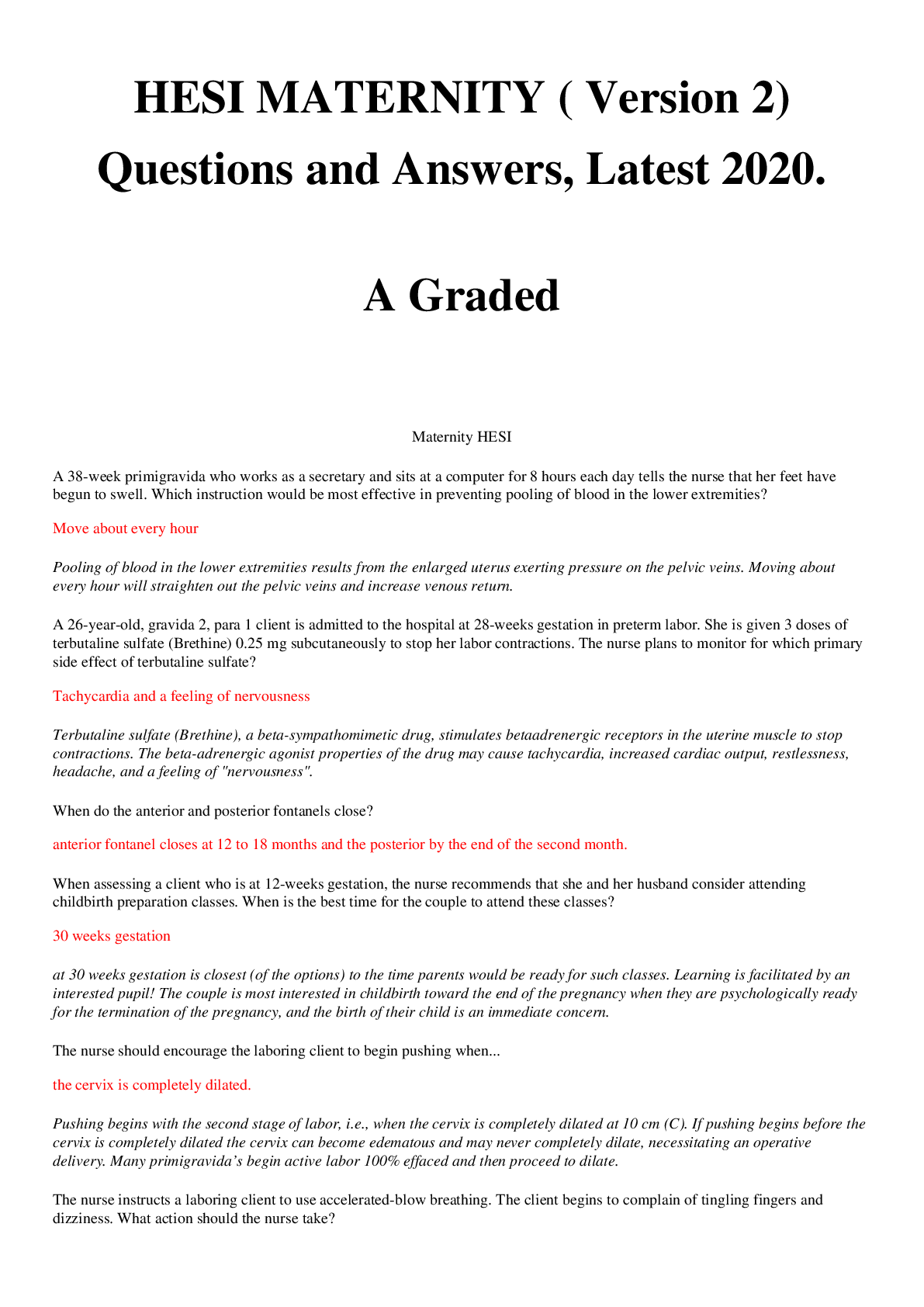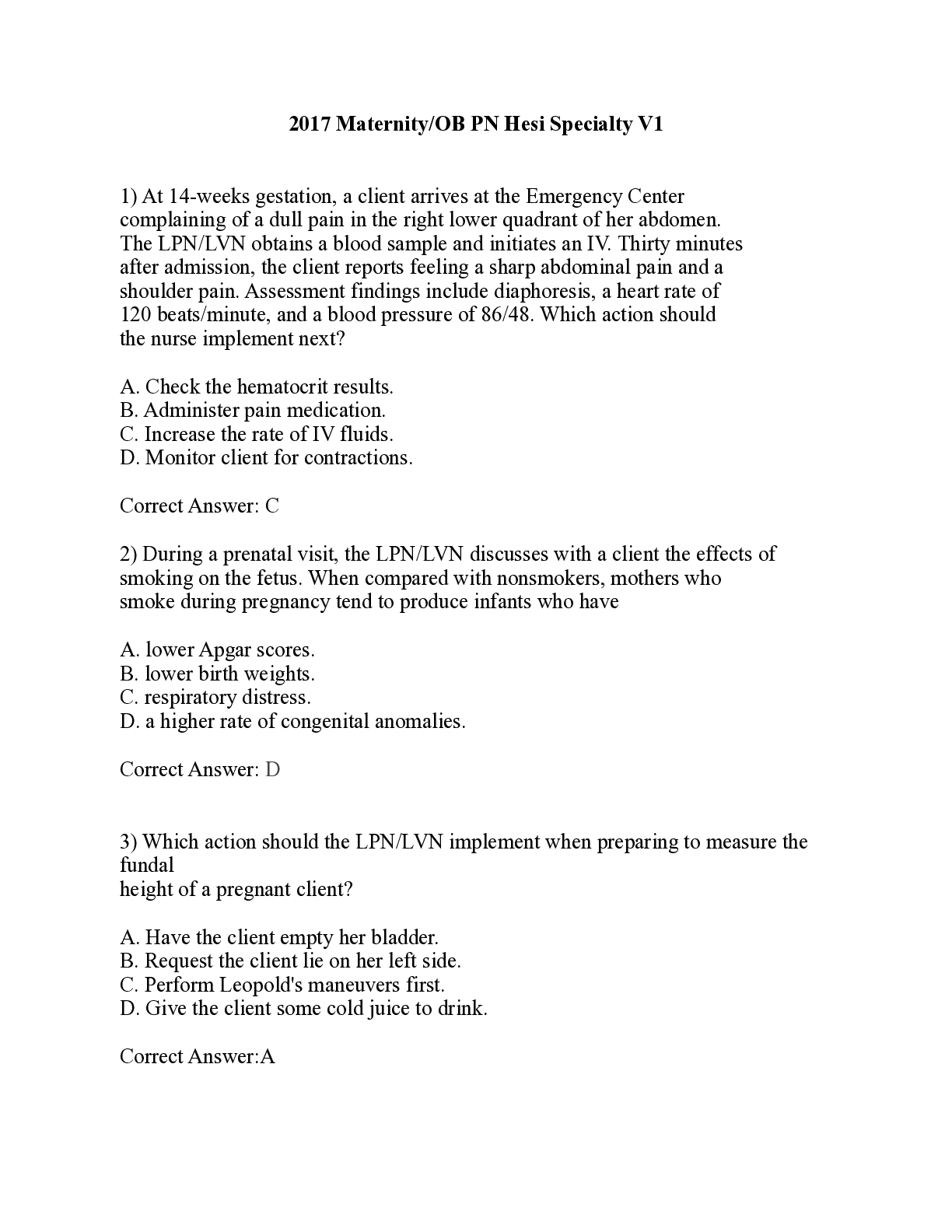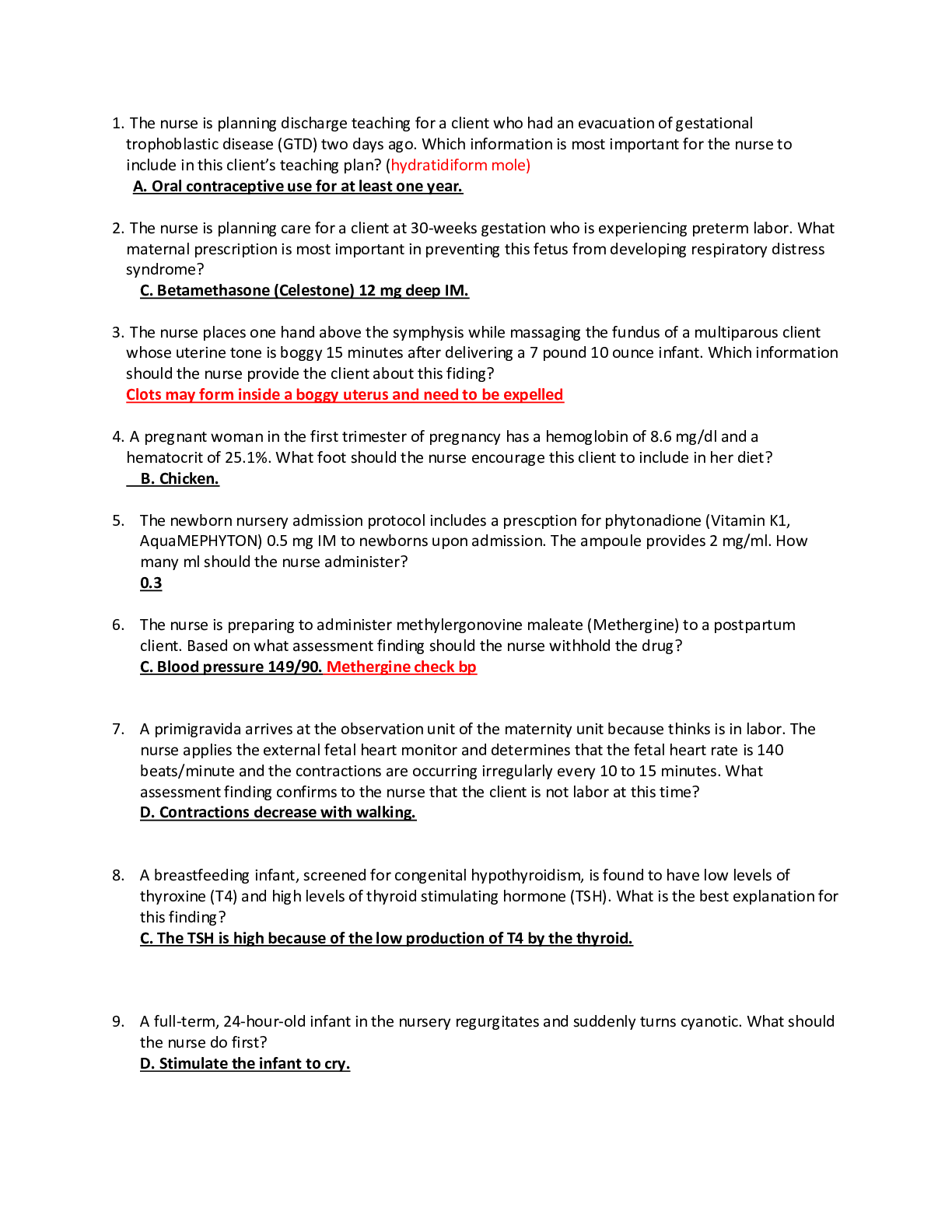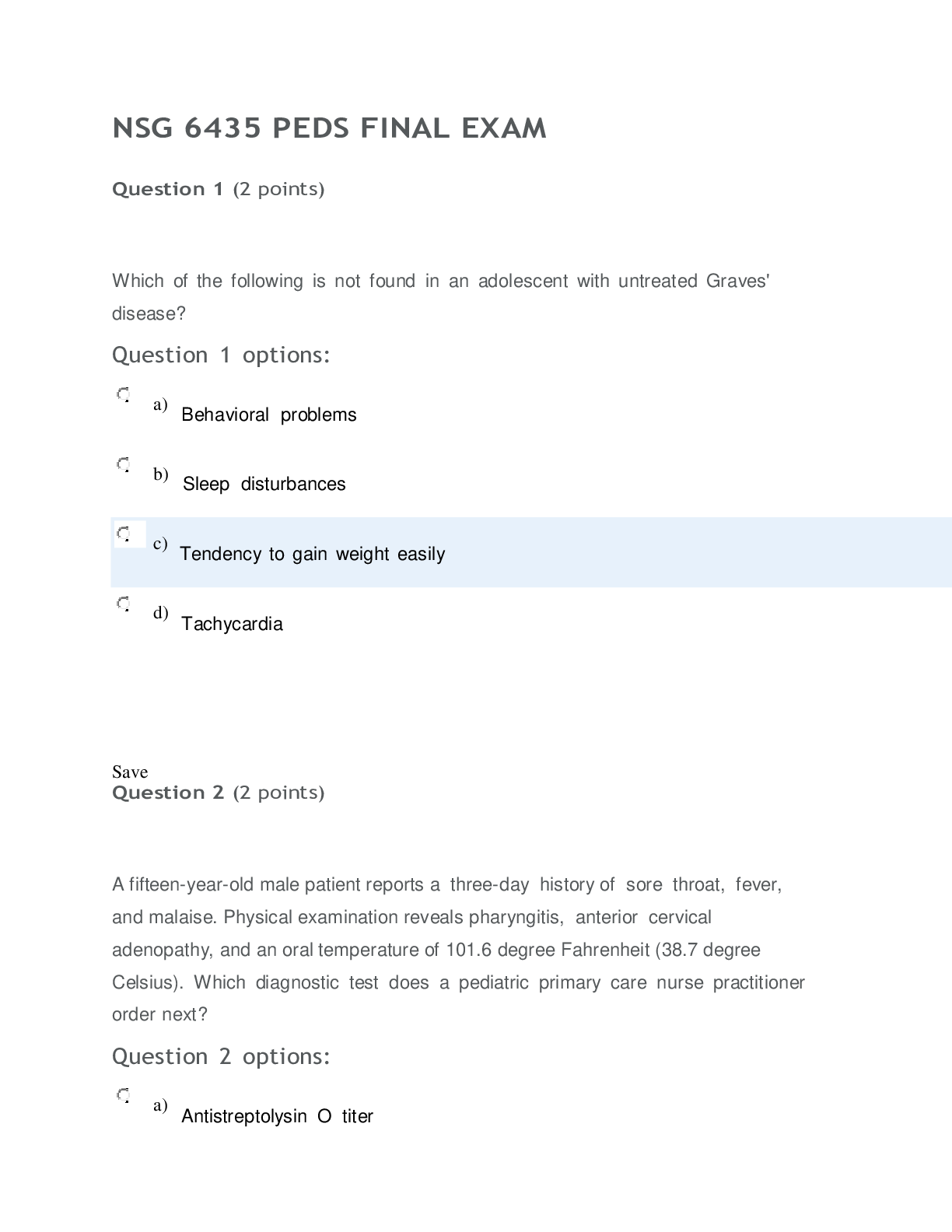NUR MISC PEDS FINAL QUESTIONS AND ANSWES, LATEST UPDATE
Document Content and Description Below
PEDS FINAL QUESTIONS CHAPTER 1: 2. Which is the leading cause of death in infants younger than 1 year in the United States? a. Congenital anomalies b. Sudden infant death syndrome c. Disorders re... lated to short gestation and low birth weight d. Maternal complications specific to the perinatal period ANS: A Congenital anomalies account for 20.1% of deaths in infants younger than 1 year compared with sudden infant death syndrome, which accounts for 8.2%; disorders related to short gestation and unspecified low birth weight, which account for 16.5%; and maternal complications such as infections specific to the perinatal period, which account for 6.1% of deaths in infants younger than 1 year of age. 3. What is the major cause of death for children older than 1 year in the United States? a. Heart disease b. Childhood cancer c. Unintentional injuries d. Congenital anomalies ANS: C Unintentional injuries (accidents) are the leading cause of death after age 1 year through adolescence. The leading cause of death for those younger than 1 year is congenital anomalies, and childhood cancers and heart disease cause a significantly lower percentage of deaths in children older than 1 year of age. 4. In addition to injuries, what are the leading causes of death in adolescents ages 15 to 19 years? a. Suicide and cancer b. Suicide and homicide c. Drowning and cancer d. Homicide and heart disease ANS: B Suicide and homicide account for 16.7% of deaths in this age group. Suicide and cancer account for 10.9% of deaths, heart disease and cancer account for approximately 5.5%, and homicide and heart disease account for 10.9% of the deaths in this age group. 7. The nurse should assess which age group for suicide ideation since suicide in which age group is the third leading cause of death? a. Preschoolers b. Young school age c. Middle school age d. Late school age and adolescents ANS: D Suicide is the third leading cause of death in children ages 10 to 19 years; therefore, the age group should be late school age and adolescents. Suicide is not one of the leading causes of death for preschool and young or middle school-aged children. 15. The nurse is aware that which age group is at risk for childhood injury because of the cognitive characteristic of magical and egocentric thinking? a. Preschool b. Young school age c. Middle school age d. Adolescent ANS: A Preschool children have the cognitive characteristic of magical and egocentric thinking, meaning they are unable to comprehend danger to self or others. Young and middle school-aged children have transitional cognitive processes, and they may attempt dangerous acts without detailed planning but recognize danger to themselves or others. Adolescents have formal operational cognitive processes and are preoccupied with abstract thinking. 8. Parents of a hospitalized toddler ask the nurse, What is meant by family-centered care? The nurse should respond with which statement? a. Family-centered care reduces the effect of cultural diversity on the family. b. Family-centered care encourages family dependence on the health care system. c. Family-centered care recognizes that the family is the constant in a childs life. d. Family-centered care avoids expecting families to be part of the decision-making process. ANS: C The three key components of family-centered care are respect, collaboration, and support. Family-centered care recognizes the family as the constant in the childs life. The family should be enabled and empowered to work with the health care system and is expected to be part of the decision-making process. The nurse should also support the familys cultural diversity, not reduce its effect. 13. The nurse is planning care for a hospitalized preschool-aged child. Which should the nurse plan to ensure atraumatic care? a. Limit explanation of procedures because the child is preschool aged. b. Ask that all family members leave the room when performing procedures. c. Allow the child to choose the type of juice to drink with the administration of oral medications. d. Explain that EMLA cream cannot be used for the morning lab draw because there is not time for it to be effective. ANS: C The overriding goal in providing atraumatic care is first, do no harm. Allowing the child a choice of juice to drink when taking oral medications provides the child with a sense of control. The preschool child should be prepared before procedures, so limiting explanations of procedures would increase anxiety. The family should be allowed to stay with the child during procedures, minimizing stress. Lidocaine/prilocaine (EMLA) cream is a topical local anesthetic. The nurse should plan to use the prescribed cream in time for morning laboratory draws to minimize pain. CHAPTER 2 8. How is family systems theory best described? a. The family is viewed as the sum of individual members. b. A change in one family member cannot create a change in other members. c. Individual family members are readily identified as the source of a problem. d. When the family system is disrupted, change can occur at any point in the system. ANS: D Family systems theory describes an interactional model. Any change in one member will create change in others. Although the family is the sum of the individual members, family systems theory focuses on the number of dyad interactions that can occur. The interactions, not the individual members, are considered to be the problem. 9. Which family theory is described as a series of tasks for the family throughout its life span? a. Exchange theory b. Developmental theory c. Structural-functional theory d. Symbolic interactional theory ANS: B In developmental systems theory, the family is described as a small group, a semiclosed system of personalities that interact with the larger cultural system. Changes do not occur in one part of the family without changes in others. Exchange theory assumes that humans, families, and groups seek rewarding statuses so that rewards are maximized while costs are minimized. Structural-functional theory states that the family performs at least one societal function while also meeting family needs. Symbolic interactional theory describes the family as a unit of interacting persons with each occupying a position within the family. [Show More]
Last updated: 1 year ago
Preview 1 out of 170 pages
Instant download
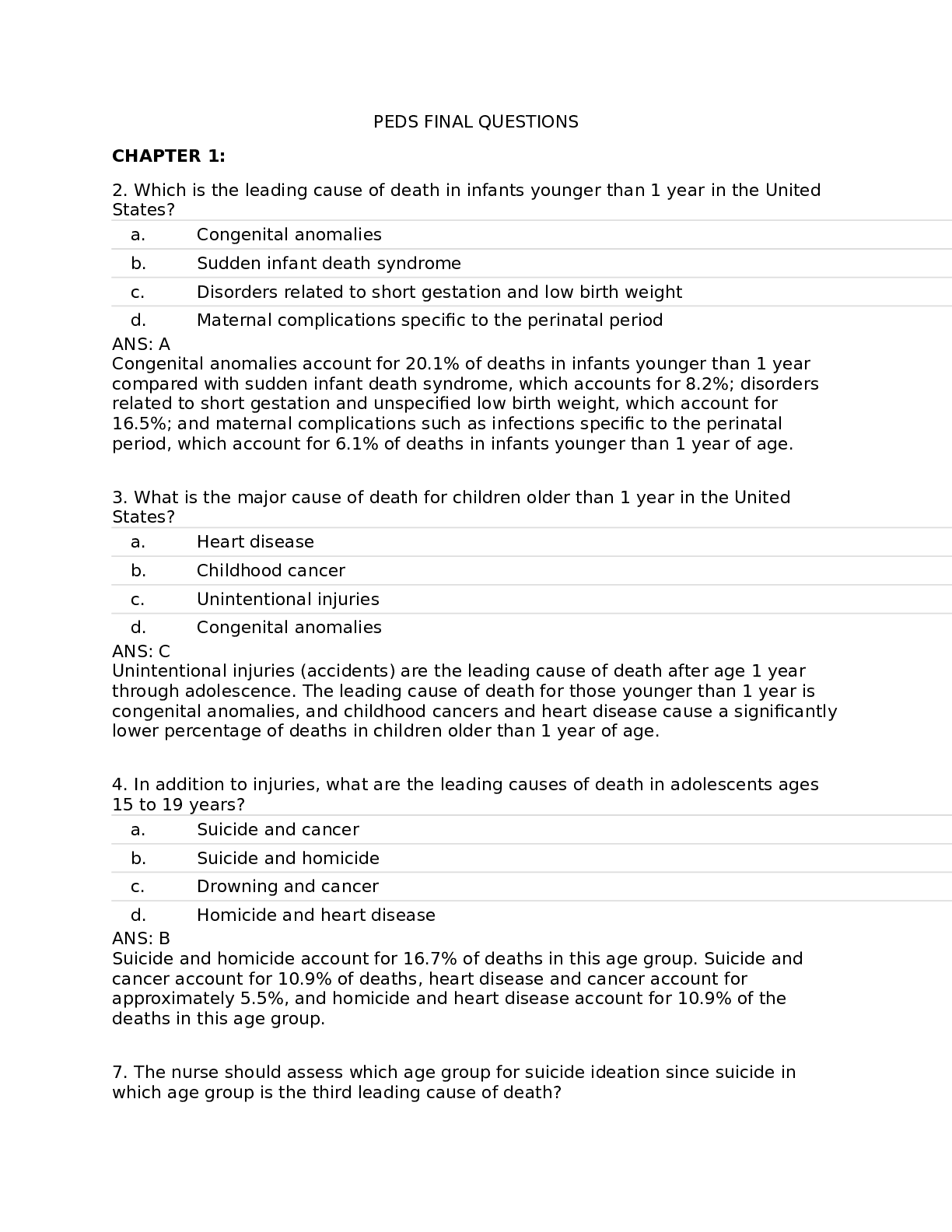
Buy this document to get the full access instantly
Instant Download Access after purchase
Add to cartInstant download
Reviews( 0 )
Document information
Connected school, study & course
About the document
Uploaded On
Dec 21, 2020
Number of pages
170
Written in
Additional information
This document has been written for:
Uploaded
Dec 21, 2020
Downloads
0
Views
40


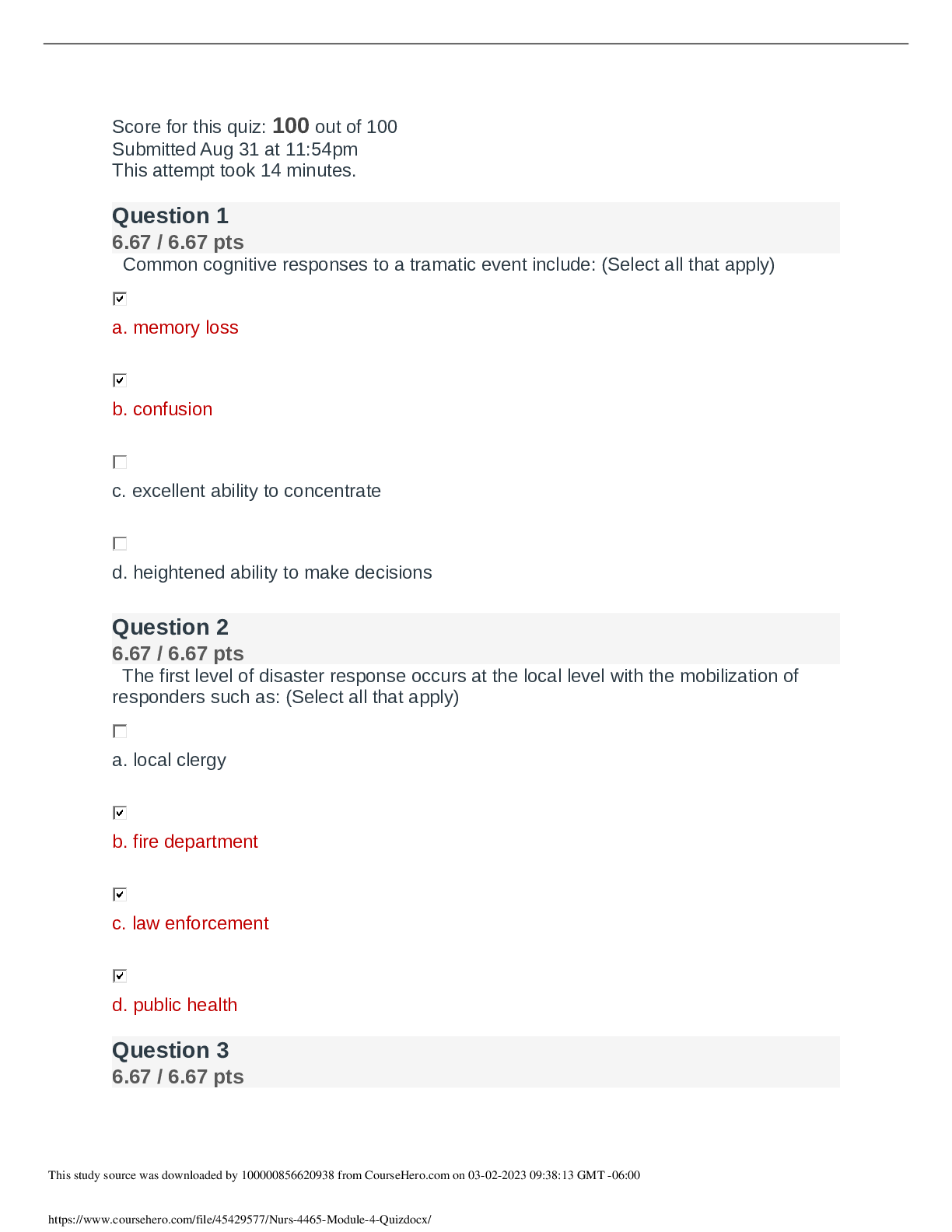
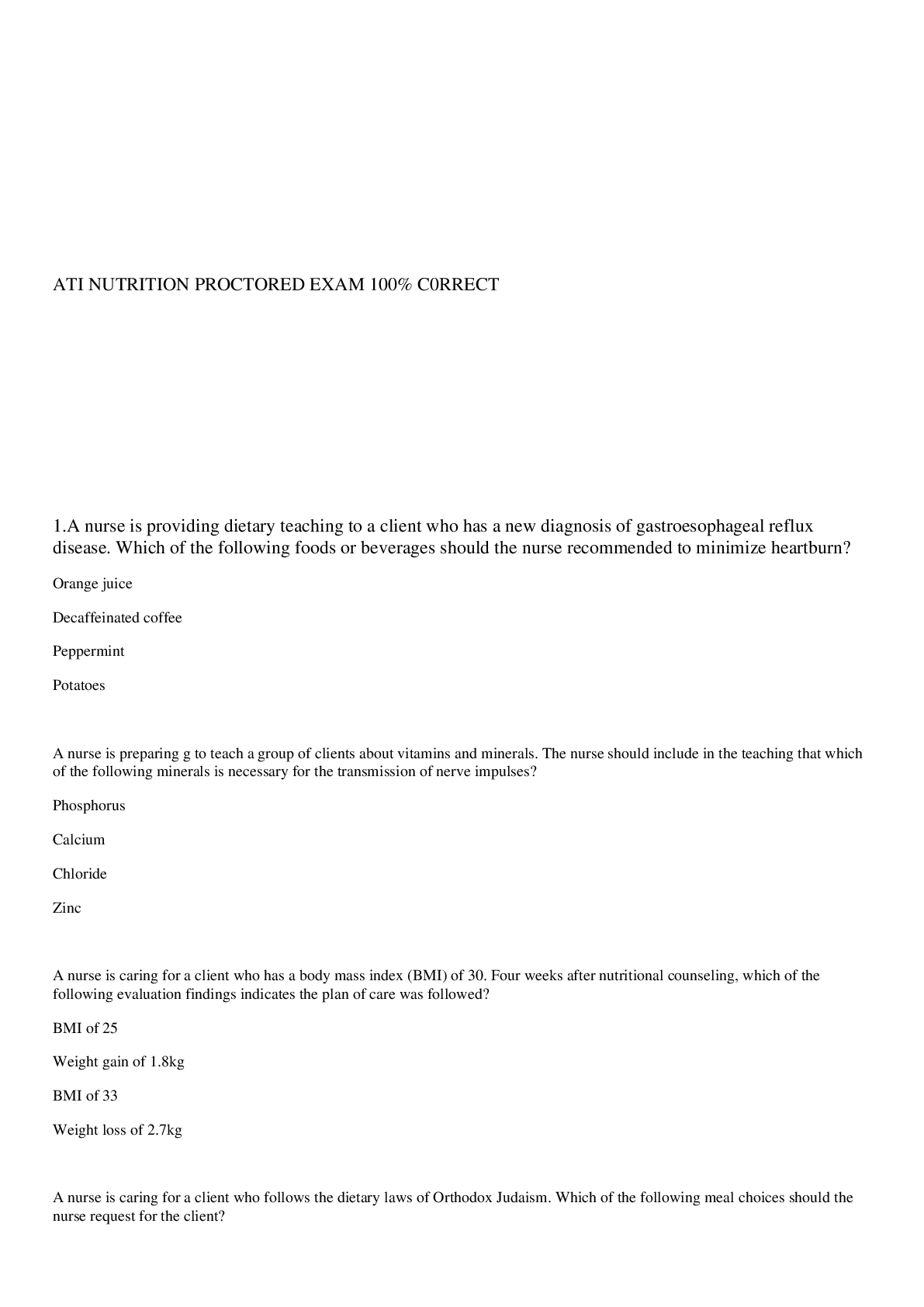
.png)
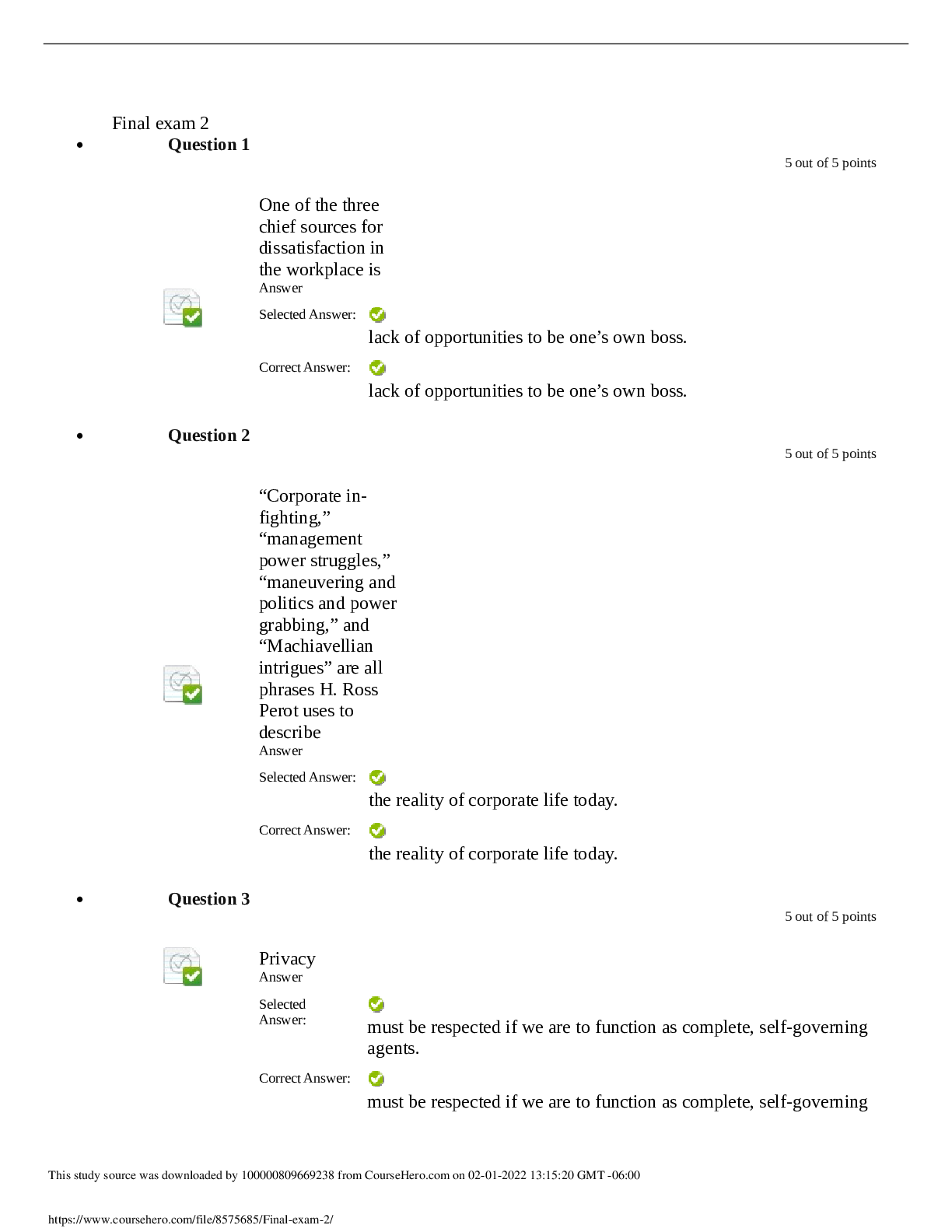
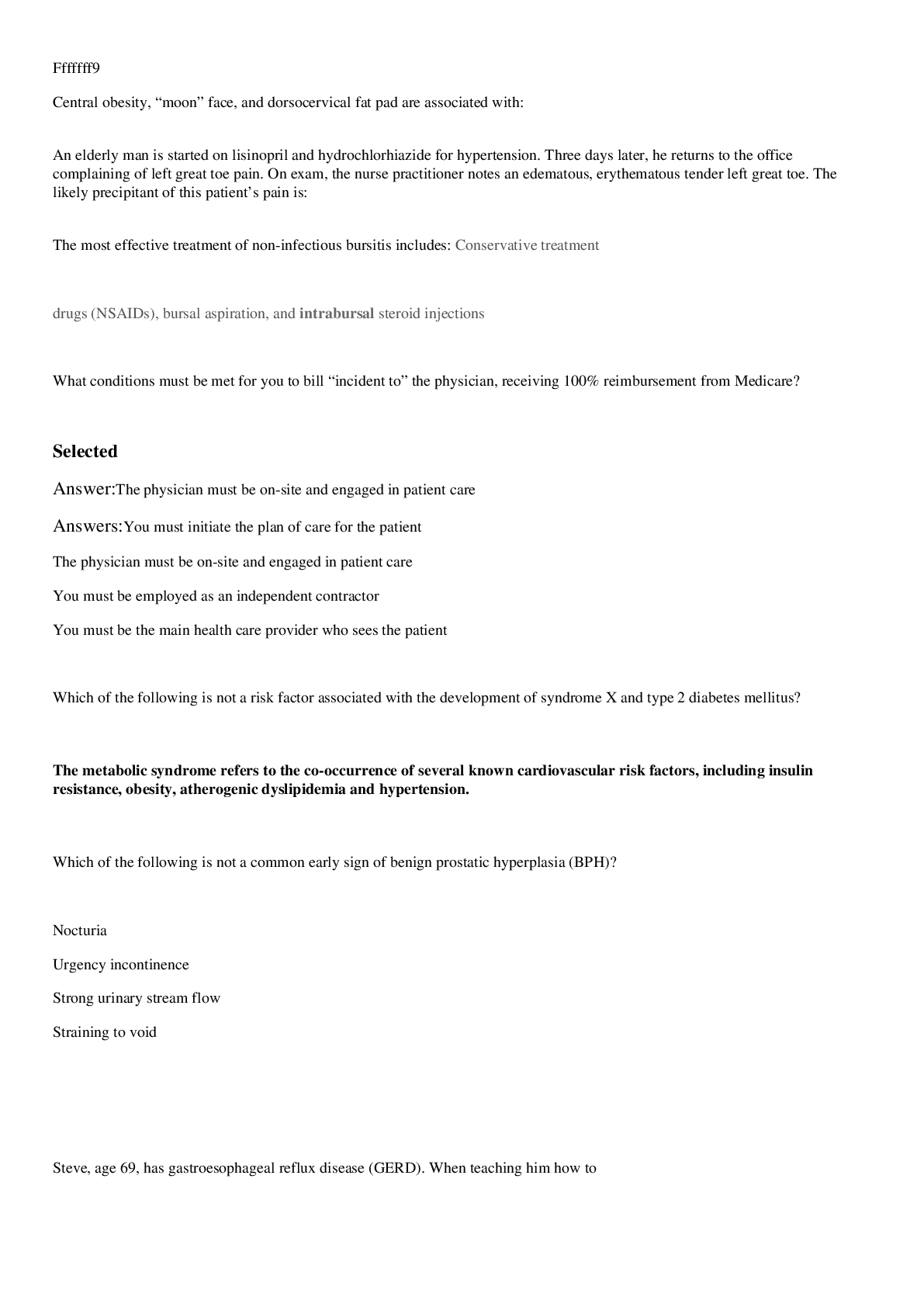

.png)
